How French hip-hop found its own voice by going back to Africa
French hip-hop is one of the most popular music genres in the French mainstream media. With the advent of satellite TV on the African continent in the early 1990s and the development (decades later) of the internet and other new technologies, French hip-hop has exploded into the large African francophone market. Originally imported from the USA, this genre became popular among the youth of African descent in France (and in many other European countries). At first, French hip-hop was largely influenced by American hip-hop, but it has throughout the years started developing its own personality and sound by drawing influences in the rich African musical heritage shared by many French rappers.
 MC Solaar. Photo: www.2kmusic.com
MC Solaar. Photo: www.2kmusic.com
In looking at the influence of Africa on French hip-hop, this text focusses largely on the African diaspora - typically rappers of African decent living in France, recording and releasing hip-hop in France (which is often later consumed in Africa). In doing so, it does not attempt to cover francophone hip-hop in general - for example, French-speaking rappers based in Africa and working only within the African market. The aim of this text is thus to explore the historical and contemporary influence of Africa on hip-hop in Europe, specifically France.
Late 1980s-1990s: The birth of French hip-hop
Rap music and hip-hop culture takes its origins in the USA, dating back to the early 1970s. In 1979, ‘Rapper’s Delight’ by Sugarhill Gang became the first global rap hit. France discovered hip-hop in the early 1980s with the rest of the world. The movement quickly became popular among the youth, particularly in ‘les cites’ (low-cost housing, the French equivalent of ‘the projects’ in the US) where there is a large and diverse community of immigrants of African descent. Underground hip-hop parties were organized and became a creative outlet where youngsters could enjoy rap music and experiment with breakdancing and graffiti art.
In the beginning, hip-hop was broadcast only via small independent radio stations called ‘Les Radios Libres’ (free radios). Through these stations and hip-hop parties, rap enthusiasts were introduced to American rap pioneers such as Afrika Bambaataa, RUN DMC and Grandmaster Flash.
In 1984, TF1 (one of the most popular national TV channels) launched a show dedicated to hip-hop and breakdancing called H.I.P-H.O.P. This iconic show is often hailed as the ‘first ever TV hip-hop show in the world’ and has largely contributed in bringing this underground movement into millions of households. At that time, local rap music was still inexistent. Breakdancing was more popular and local DJs would only play American artists when hosting hip-hop parties or on radio shows.
The first groups of French rappers emerged in the late 1980s, with the likes of NTM, Assassin and Ministère A.M.E.R. These groups were inspired by American rap groups such as Public Enemy and NWA. Their controversial lyrics (including criticism of institutions such as the media and the police) echoed with this first generation of local rappers. Indeed, most of them come from poor neighborhoods and rap music quickly became a platform to address issues such as racism, police brutality, unemployment, discrimination among others. These first rap groups were rather unwelcomed by authorities and the media because of their controversial lyrics and were therefore forced to remain underground.
In the early 1990s, a new trend in hip-hop was introduced to the public. It was less political, more celebratory and based on poetic rhymes and well-crafted wordplays. This style was largely embraced by the public and the media and benefited from the benevolence of the authorities. The figurehead of this genre is undoubtedly MC Solaar with highly acclaimed singles and albums such as ‘Bouge de la’, ‘Caroline’ (from his debut album Qui sème le vent récolte le Tempo, 1991), ‘Obsolète’ (Prose Combat, 1995); ‘Les temps changent’ and ‘Paradisiaque’ (Paradisiaque, 1997). Other key figures of this light-hearted rap are Doc Gyneco, Ménélik and Alliance Ethnik, to name a few.
The explosion of the local rap scene: French rap finds its personality
In the late 1990s, thanks to the pioneering work of the likes of MC Solaar, rap music was widely accepted by the public and the media, and became a relevant genre in the French cultural landscape. There emerged many artists, powerful labels and crews such as I Am, La Fonky Family, 3ème Oeil, La Brigade, Mafia K-1 Fry, Saian Supa Crew, and Ideal J. Pioneer groups such as NTM and Ministère AMER managed to come back in the spotlight by adopting a more commercial strategy. For instance, the members of Ministère AMER created (with the help of their manager Kenzy) a label and crew called Secteur Ä. Through this powerful label, the careers of many affiliated artists and groups were launched (Passi, Stomy Bugsy, Doc Gynéco, Ärsenik, Neg’Marrons, Bisso Na Bisso, etc.). Secteur Ä is still considered today as one of the most powerful labels in French rap history and it includes members from diverse origins such as Senegal, Cape Verde, Congo and the Antilles in the French Caribbean.
It was also during these years that local hip-hop started developing a clearly distinct sound. French artists stopped mimicking American rappers and started writing lyrics that were more relevant to the youth growing up in the projects and the numerous issues they face daily. In 1997, a culturally diverse French soccer team (composed mainly of players of immigrant origins) won the FIFA World Cup. France went through a phase where diversity was celebrated and embraced, with slogans like ‘Black-Blanc-Beur’ (meaning ‘black, white and Arab’)[i]. This event brought artists - including rappers - from diverse origins and backgrounds further into the spotlight.
Thanks to satellite TV, French rappers were also becoming popular on the African continent. In 1992, the French music channel MCM was broadcast in most French-speaking African countries. In 1998, MCM Africa, a sister channel dedicated to urban genres including RnB, Zouk and hip-hop - was launched. The popularity of these channels on the continent was a major step in building a bridge between artists from the diaspora and the African audience. In 2003, MCM was bought and rebranded as Trace TV. This channel, which focuses on urban and tropical genres, is today one of the most popular music channel across the continent and beyond.
Bisso Na Bisso, the precursors of an African-flavored sound
In 1999, some of the members of the label Secteur Ä who shared Congolese heritage (Congo-Brazza) formed a collective called Bisso Na Bisso (which means ‘between us’ in Lingala). The members were Passi, Ben-J, Lino, Calbo, Mystik, Doc and G Kill, along with the only female of the group, the singer M’Passi. Their album called Racines (roots) is a fusion of hip-hop with African and Caribbean rhythms, including rumba, soukous and zouk. The album contains collaborations with legendary African artists such as Koffi Olomide, Papa Wemba, Ismael Lo, Lokua Kanza, Manu Dibango and the iconic French/Caribbean Zouk group, Kassav. Bisso Na Bisso released many successful hits from the album and addressed through their songs various African issues such as: war, unity and solidarity (in the single ‘L’union’); immigration and bicultural identity (in ‘Le cul entre deux chaises’); bad governance and corruption (in the satirical ‘Dans la peau d’un chef’). The album was a huge success in France and throughout the large Francophone African market. That year the group earned three Kora Awards in the categories Best Arrangement, Best Group and Best Video.
Another group that has extensively explored their African heritage is 113, which is part of a collective called Mafia K-1 Fry and is composed of Karim (of Algerian origin), AP (from the French Antilles) and Mokobé (of Malian origin). Their hit song ‘Tonton du Bled’ (2000) discusses clichés and stereotypes with humour. Karim narrates/raps about how it feels to return home (to Algeria in this case). The song blends rap music with Algerian Rai sounds. Another of their successful singles is ‘Un Gaou à Oran’ featuring Magic System. Mokobé later released solo albums Mon Afrique (2007) and Africa Forever (2011) and remains one of the leading figures in ‘African-flavored’ rap today. He has collaborated with many artists such as Fally Ipupa in the soukous-inspired ‘Malembe’ (2008), Malian diva Oumou Sangaré (‘Voix du Mali’, 2009) and more recently with Nigerian duo P-Square (‘Getting Down’, 2015).
French rap in the new millennium
The development of the internet and other new technologies over the last decade has dramatically affected the music industry and the way the public consume music. The music industry all over the world faces challenges such as a decline in physical album and magazine sales. Piracy and copyrights are other issues brought about by these new platforms. However, these challenges also come with new opportunities for artists, such as the exposure to a worldwide market and the possibility to release mixtapes or singles online instead of full albums.
The French rap industry has also been affected by many changes. Many of the most powerful labels from the 1990s no longer exist. Artists of the previous decade such as IAm NTM, Stomy Bugsy, Doc Gyneco, Passi, 113, Jacky and Ben-J (ex Neg’ Marrons) were still active up to the early 2000s, but only a few are still active today. The rest are either retired (re-uniting occasionally for special performances) or are pursuing other interests, such as production, business and even acting.
During the first decade of the 2000s, the hip-hop industry was driven by individualism and egos. A new generation of rappers emerged. Contrary to their elders who had forged their own sound, rappers of this generation went back to copying American rappers. Among the most popular rappers of this period one can mention Booba, La Fouine and Rohff, who are still popular today. This generation of rappers emulated the ‘bling’ lifestyle of American artists. However, like their elders, their African origins and social issues faced by African immigrants are still addressed through their music.
Furthermore, they have continued to strengthen their relationship with their African fans. From the early 2000s, more African promoters have started bringing French rappers on the continent. Many big names of the hip-hop industry perform regularly in countries like Côte d’Ivoire, Senegal, Gabon and both Congos. For instance, La Fouine and Soprano participated in the Francofolies Festival, held in Kinshasa, DRC in early 2015.
French rap today
Over the past couple of years (since approximately 2010), French hip-hop seems to be going through another phase. Social media platforms like Facebook and Youtube have allowed a new generation of rappers to become popular. These rappers are taking their share of the stage dominated by the likes of Booba, La Fouine and Rohff for almost a decade. One can also mention Orelsan, 1.9.9.5. L’Entourage, Sexion d’Assaut and Youssoupha, among others. Interestingly, some pioneer artists or groups are also making a comeback.
The collective Sexion d’Assaut and solo artist Youssoupha are some of the most notable artists of this latest generation. Both are very popular across Francophone Africa and have performed in front of huge audiences in Guinea Conakry and Congo-Kinshasa, among others. Furthermore, they are repeating the successful formula of legendary artists/label like MC Solaar and Secteur Ä.
One of the most popular and bestselling group of this new generation, Sexion d’Assaut (via their label Wati B) is a goldmine of individual talents of diverse origins (Mali, Senegal, DRC, Cote d’Ivoire, France and Guinea). They have released many successful singles such as ‘Désolé’, ‘Avant qu’elle parte’ and ‘L’apogée’, among others. They have also received many accolades along the way. They have released the hit ‘Africain’ (African), which is a hymn to their diverse African heritage. Sexion d’Assaut has launched the solo careers of some of the most successful rap artists today, like Maître Gims, Lefa and Black M.
Maître Gims (whose father is well-known veteran Congolese musician Djuna Djanana) is a singer/rapper known for his powerful vocals in most of Sexion d’Assaut songs. He has been enjoying a lot of success recently with his solo projects. His first solo album, Subliminal , sold over 1 000 000 units (diamond status in France). His latest hit single, ‘Sapés comme jamais’, plays around the theme of ‘Sapologie’ (a fashion movement from Congo DRC and Congo-Brazza) and a recurrent theme in the music of both countries. The video features Niska, a rapper originally from Congo-Brazza, and was released in October 2015. The video of the song can be seen as a tribute to the Sapologie movement and his Congolese heritage.
Youssoupha (whose father is Congolese music legend Tabu Ley) is another successful rapper of this new generation. Youssoupha (whose albums include A chaque frère in 2007; Sur le chemin du retour in 2009; Noir D*** in 2012 and NGRTD in 2015) is known for his conscious and poetic lyrics. He cites the legendary MC Solaar as one of his biggest inspirations. He too explores his identity by incorporating African sounds and samples into his music. Worth mentioning is his single ‘Les disques de mon père’ (meaning ‘My father’s albums’), where Youssoupha samples Tabu Ley’s single ‘Pitié’. It is a tribute to his father’s musical legacy. In the video, the late Congolese musician is showed in a studio recording with his son.
Although French rap started out by copying American hip-hop, this text shows how it has developed its own sound and personality over the course of decades. This has been done mainly by artists who have started (and continue) to look for inspirations in their diverse African heritage to develop original sounds and rhythms. Furthermore, by getting back to their roots (with the help of new technology and through collaborations with African musicians), French rappers have managed to build a huge fanbase among the youth of the African continent and this has opened an even wider market for them.
[i] 'Black-Blanc-Beur' means 'Black-Whites and Arabs'; it is a word play around the tagline ‘Bleu-Blanc-Rouge' (Blue/White/Red), the three colors of the French flag.














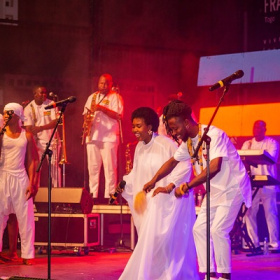

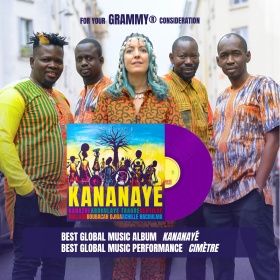



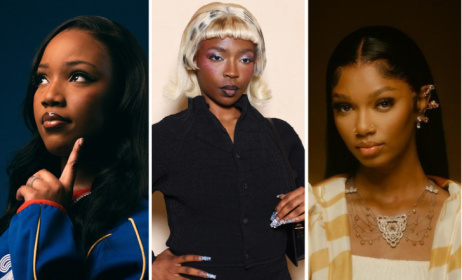
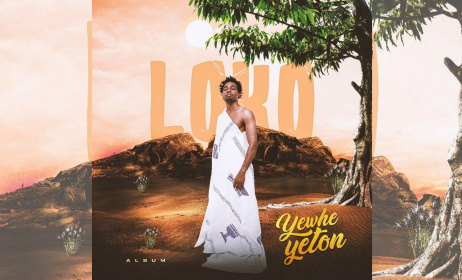
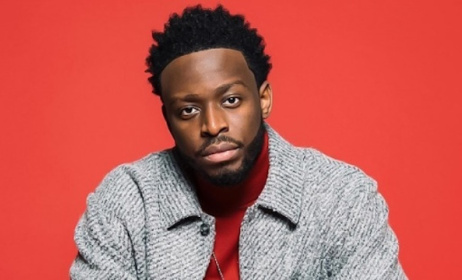
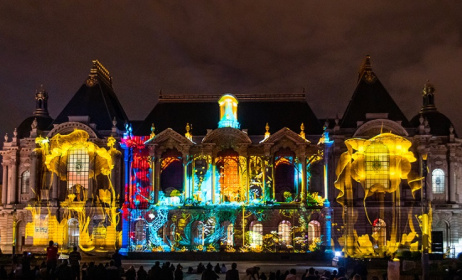

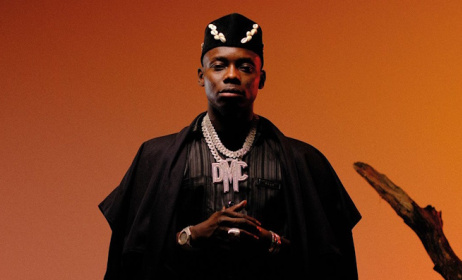

Commentaires
s'identifier or register to post comments